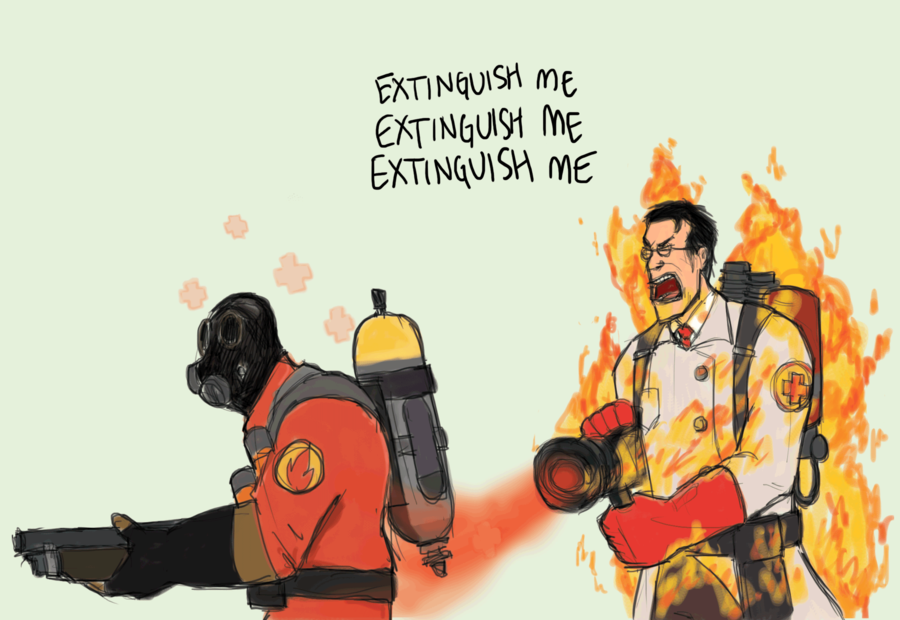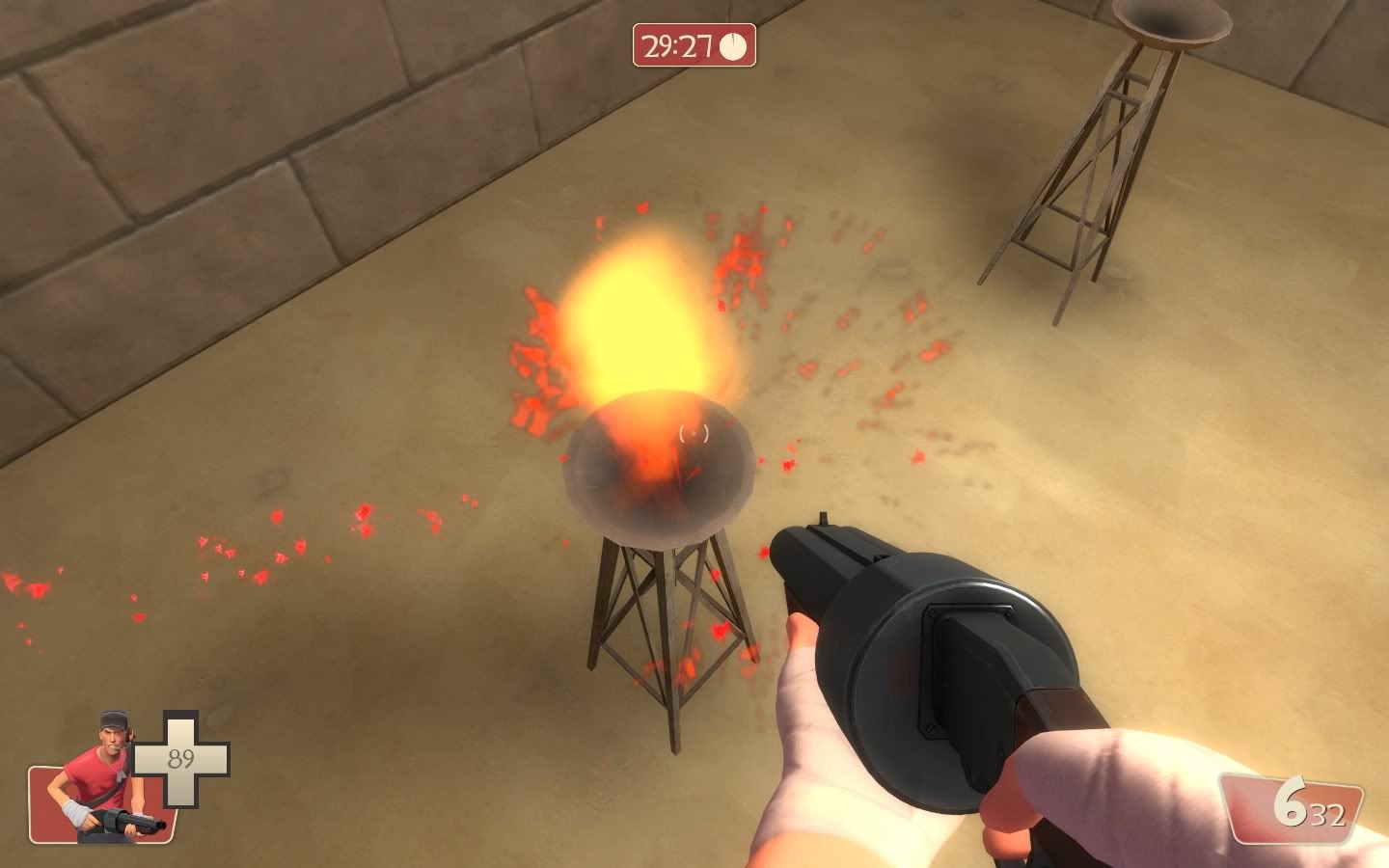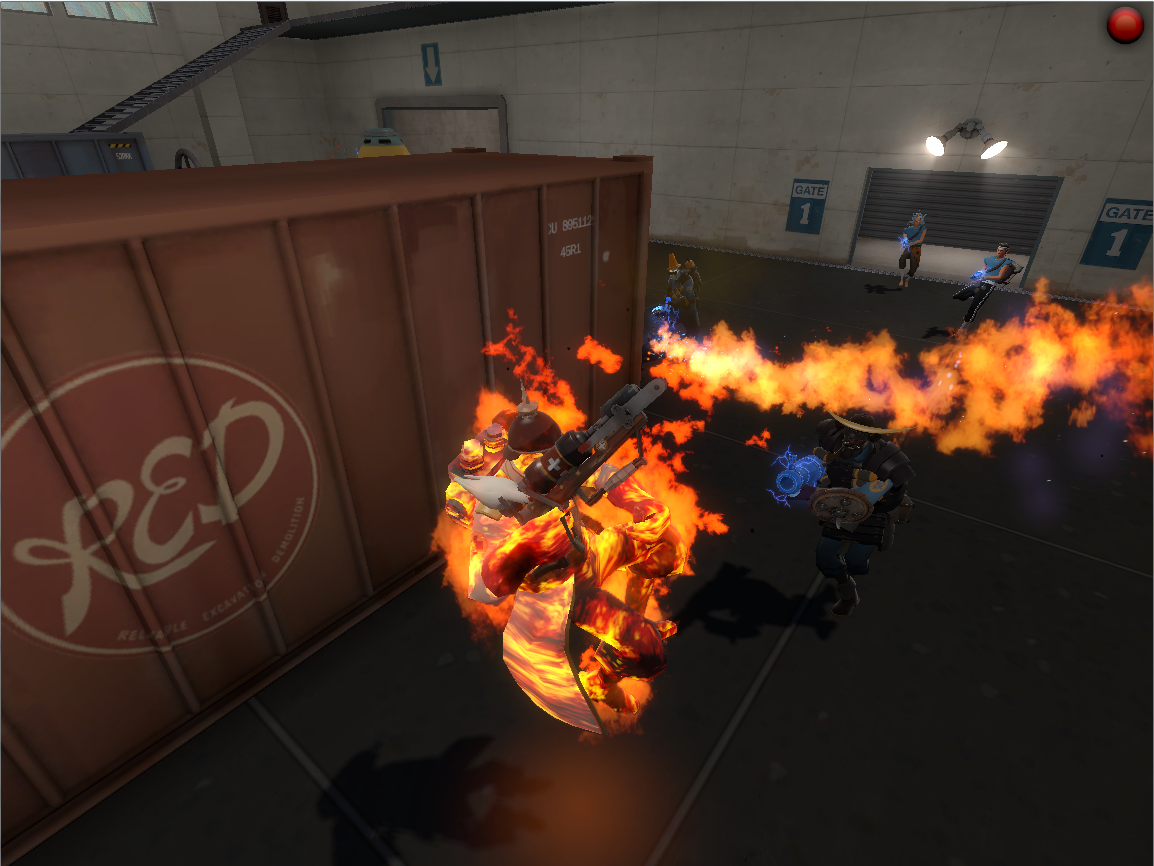On Fire

Flames are weird in video games. In real-life, they’re impossibly debilitating and would make continuing to do anything, much less fighting other people, an excruciating experience. Also, real-life flamethrowers can shoot yards of deadly liquid flames that put every video-game flamethrower to shame. In video games you generally want the players to still be functional and you want flamethrowers to fill the “close-range combat” role, so these aspects of flamethrowers are often toned down. You can read more about it on the TV Tropes page Video Game Flamethrowers Suck.

Monolith Production’s Blood was the first game to have afterburn, and said afterburn killed its opponents extremely quickly. The Flamethrower doesn’t appear in Half-Life, but it’s inclusion in Team Fortress Classic allowed modders to use one in their projects. Most of these flamethrowers operated somewhere in between TFC’s (incredibly minor afterburn damage) and They Hunger‘s (can’t ignite, instead each burst of flame deals ludicrously high damage, leaving range-of-effect as its main weakness).

When designing TF2, Valve clearly had the complete failure of the TFC Flamethrower in mind when they severely buffed its damage. In return, they removed its ability to ‘stack’ flame damage by applying it via multiple sources. (As the Flamethrower was originally Pyro’s only source, this wasn’t a huge loss). But ultimately, even that wasn’t enough to save the flames on its own; it’s just very difficult to design a damage-over-time effect that’s worth applying when not-damage-over-time effects dominate the field. And that’s where gimmicks like airblast and forced critical hits rose to prominence, firmly establishing Pyro as the third corner of the Critical Hit Class triangle, with Sniper and Spy. (That’s another TV Tropes link. Hope you didn’t already lose too much time on my previous one.) Interestingly, those three classes form a sort of balance-triangle as well, where each counters and is-countered by another. Valve also transparently added bleed into the game as a way of letting other classes deal damage-over-time without appearing to encroach on Pyro’s territory (They do anyway).
I think part of the problem with TF2’s fire, honestly, is that they tried to dedicate an entire class around it. No other game mechanic received that treatment; hitscan is everywhere, as is speed, high health pools, explosives, etc. Damage-over-time has its roles like all of these other aspects, but if a class is built around just DoT and nothing else, they firmly place themselves in the “master of none” category. This next statement will probably be an unpopular one, but perhaps if there were no Pyro class and fire were instead spread around various classes’ unlocks as a damage option that saw various iterations and applications (for example, any other class having to choose between equipping stock melee or the Sharpened Volcano Fragment), fire would then fill a more versatile battlefield role than it does now.
This article is part of my “On Shooters” series, where I compare multiple games by focusing on a specific game mechanic or developer objective. To read the rest, click here!